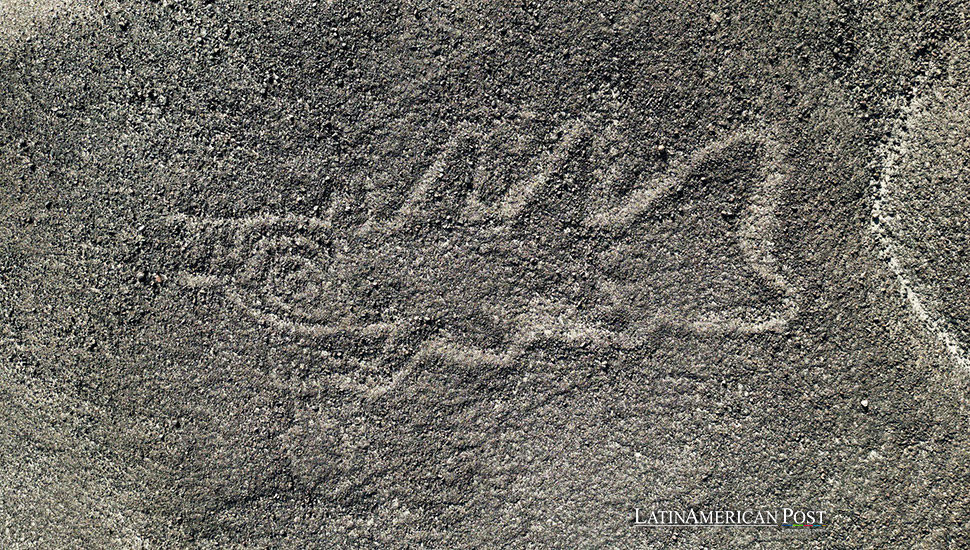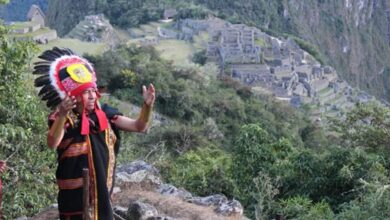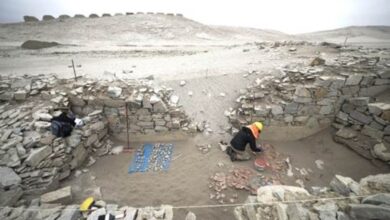Artificial Intelligence Unveils 303 New Nazca Geoglyphs in Peru

Thanks to artificial intelligence, researchers have identified 303 new geoglyphs in Peru’s Nazca desert, offering new insights into one of archaeology’s greatest mysteries. This discovery, made by Japanese researchers and IBM, sheds light on the mysterious Nazca culture.
Ancient Lines Meet Cutting-Edge Technology
Artificial intelligence (AI) has revolutionized fields across the globe, and archaeology is no exception. The recent discovery of 303 new geoglyphs in the Nazca desert of Peru, made possible by AI, is a testament to how technology can deepen our understanding of the ancient world. These newly identified geoglyphs, found in just six months, have doubled the known figures in the region, offering fresh perspectives on the enigmatic culture that created them.
The research, led by the Nazca Institute of Yamagata University in Japan and IBM Research, marks a significant breakthrough in the study of the Nazca Lines. This collaboration used advanced AI models to analyze vast amounts of geospatial data, identifying probable locations of the geoglyphs, which were later verified by archaeologists on the ground.
The Nazca Lines etched into the Peruvian desert over 1,500 years ago, have fascinated researchers, tourists, and conspiracy theorists alike. For decades, scholars have debated their purpose—were they ritual sites, celestial maps, or simple markers? Now, AI has helped provide answers that could bring us closer to solving the mystery of the Nazca civilization.
Tis groundbreaking discovery underscores how modern technology is breathing new life into archaeology, turning data into knowledge that might otherwise have remained buried for centuries.
Unraveling the Mystery of the Nazca Geoglyphs
The Nazca Lines, sprawling across the dry plains of southern Peru, are a UNESCO World Heritage site and one of the world’s most intriguing archaeological wonders. These enormous designs, some stretching for miles, depict a wide range of figures, from geometric shapes to animals and human forms. The discoveries have revealed two main types of geoglyphs: large, linear designs used for communal rituals and more miniature, relief-like figures representing human activity.
The larger geoglyphs, often featuring animals such as birds and monkeys, are arranged along an intricate network of lines and trapezoidal patterns. According to researchers, these massive figures likely served ceremonial purposes for the Nazca people. They might have been sites of ritual processions, with entire communities coming together to celebrate and honor their gods or ancestors.
In contrast, the smaller geoglyphs, often depicting human figures and domesticated animals like llamas, are situated near winding paths and were likely designed to be seen by individuals or small groups as they walked through the desert. These smaller designs functioned as markers, providing information about the land, agriculture, or social hierarchy.
The smaller geoglyphs often display human forms holding objects resembling severed heads, referencing the Nazca’s “trophy head” tradition. The discovery of these geoglyphs near well-trodden paths suggests that they may have been intended to communicate with passersby, possibly as warnings or reminders of the tribe’s triumphs in battle. This idea—that these designs served ritualistic and practical functions—adds depth to our understanding of Nazca culture.
These new findings support the theory that the Nazca people used the desert as a canvas to express their complex religious beliefs and social structure. Each line, curve, and shape was a carefully considered part of a larger cosmology, revealing the deep connection between the Nazca people and the natural world.
AI: The Future of Archaeology
While the Nazca Lines have been studied for over 80 years, this new research shows the potential for AI to transform the field of archaeology. Using AI, the Yamagata University and IBM Research team developed a model that could process massive amounts of satellite imagery to identify potential geoglyphs that had not yet been discovered. The AI system was designed to work with limited training data, allowing it to search efficiently without extensive background information.
The researchers faced a unique challenge in training the AI. With few existing geoglyphs to serve as examples, the AI had to learn to recognize subtle variations in the landscape, identifying areas where human activity had altered the ground in invisible ways. This approach allowed the system to predict where new geoglyphs might be located, giving archaeologists a roadmap for further exploration.
Once the AI flagged potential sites, the archaeologists set out to verify the findings on the ground. This combination of cutting-edge technology and traditional archaeological methods resulted in the discovery of 303 new geoglyphs, some of which are remarkably well-preserved despite their age.
AI in this project could revolutionize how archaeologists approach similar sites worldwide. Already, researchers are using AI to examine other ancient civilizations, from the Mayan ruins of Central America to the deserts of Egypt. By processing data faster and more accurately than ever, AI is helping archaeologists uncover new clues about the past, and this technology will likely play an even more significant role in future discoveries.
Nazca’s Legacy and the Road Ahead
The discovery of these new geoglyphs is not just a triumph of technology—it also opens up exciting new avenues for understanding the Nazca culture. According to the team at Yamagata University, their research suggests that hundreds, if not thousands, of additional geoglyphs could still be waiting to be found. The patterns and motifs of these designs are crucial to unlocking more information about how the Nazca people lived, worshipped, and interacted with their environment.
One of the most intriguing aspects of this discovery is what it reveals about the Nazca’s relationship with the land. The desert, with its harsh climate and lack of vegetation, was not an easy place to live, yet the Nazca people thrived there, building an advanced society that harnessed the natural resources around them. They developed an ingenious system of aqueducts to bring water to their crops, allowing them to farm in an otherwise sterile environment.
This new research also sheds light on ancient Peru’s broader cultural and political landscape. The Nazca were not a monolithic society—instead, they were a collection of loosely connected groups, each with its customs and leaders. The geoglyphs may have unified these disparate groups, providing a shared language of symbols that helped reinforce social bonds and religious beliefs.
These findings have the potential to revolutionize our understanding of the Nazca civilization. They would provide a new context for the geoglyphs and reveal the deeper connections between art, religion, and politics in ancient Peru.
Preserving Nazca’s Past for the Future
While discovering new geoglyphs is cause for celebration, it also raises important questions about preservation. The Nazca Lines have been remarkably well-preserved thanks to the region’s dry climate but are not immune to damage. Human activity, including illegal mining and tourism, threatens these ancient treasures. In recent years, some geoglyphs have been damaged by off-road vehicles and construction projects.
Using AI to identify new geoglyphs could help protect these sites by mapping their exact locations and creating detailed records of their condition. This information could be used to develop more effective conservation strategies, ensuring that future generations can continue to study and appreciate the Nazca Lines.
In addition, the growing interest in the Nazca culture could lead to increased tourism, which brings opportunities and challenges. While tourism can provide much-needed revenue for local communities, it must be managed carefully to prevent damage to the fragile desert ecosystem. Initiatives like guided tours and designated viewing platforms can help mitigate these risks, allowing visitors to experience the Nazca Lines without harming them.
The use of AI in the Nazca project reminds us of the power of technology to uncover the past and protect it for the future. As researchers continue to explore the Nazca desert and other ancient sites worldwide, combining traditional methods and modern innovation will be vital to preserving our shared heritage.
The Nazca Lines in the Age of AI
The discovery of 303 new geoglyphs in the Nazca desert is a testament to these ancient figures’ enduring mystery and allure. Thanks to the collaboration between Yamagata University and IBM Research, AI has opened up new possibilities for understanding one of archaeology’s most puzzling sites. As we learn more about the Nazca people and their remarkable culture, we are reminded of the importance of preserving these sites for future generations.
Also read: Latin America Unites in Peru to Strengthen Volcanic Surveillance
With hundreds more geoglyphs potentially waiting to be discovered, the work in Nazca is far from over. But thanks to technological advances, we are closer than ever to unlocking the secrets of the desert and understanding the people who once called it home.





